This is our guide to the 5 stages of team building.
The team building stages are the different phases of the team development. These stages include forming, storming, norming, performing, and adjourning. These elements are also known as “team phases.”
These stages are steps in the team building process and are similar to team building best practices.
This article covers:
- What is the team development process?
- What are the five stages of team building?
- Why do some sources call team building a four stage process?
- What is the most important stage of team development?
- Why is the group development process important?
- Do the five stages of team building always occur in the same order?
Here are the facts.
What is the team development process?
Psychologist Bruce Tuckman shared the team development process with the world in 1965. The process consists of five stages that teams progress through from the time a leader assigns a project and creates a team, to the point the team completes the assignment and disbands. Tuckman asserted that each of these phases was necessary in order for a team to learn, grow, and deliver results of the highest quality.
The team development process consists of five stages. Experts occasionally refer to the process as Tuckman’s stages of group development, the group development process, or the five stages of team building.
What are the five stages of team building?
The five stages of team development are forming, storming, norming, performing and adjourning.
1. Forming
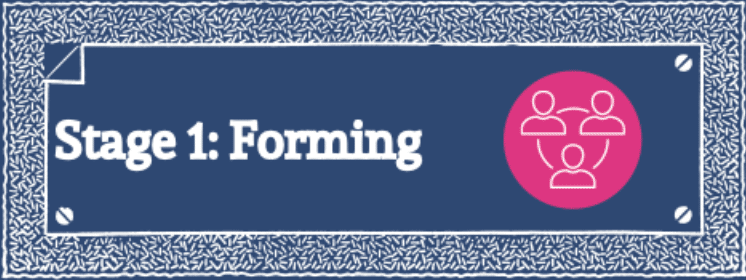
The forming stage of team development is the first step in team bonding. In this initial stage, group members gather and learn more about each other. Though some people might refer to the forming stage as “the honeymoon stage” of team building, it more closely resembles a first date. Teammates meet, discover group member strengths and weaknesses, explore the basics of the project, and form group goals. Group members designate roles and delegate responsibilities with help from team leaders. Personalities emerge gradually. Relationships begin to grow.
Team building activities for the forming stage of team development: Teammates can engage in getting to know you questions to form initial connections and learn the basics. To gain a more in-depth understanding of teammates’ backgrounds and motivations, teams can participate in storytelling workshops that encourage employees to share intimate information to refine storytelling skills.
2. Storming
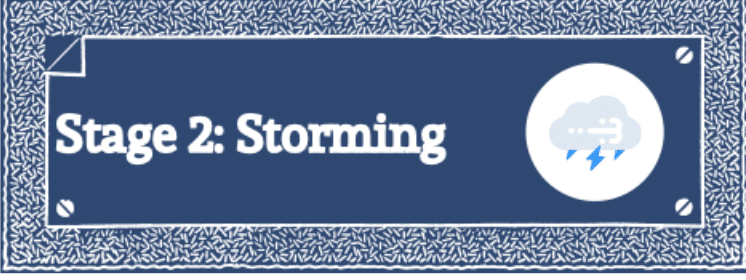
The storming stage of team development is phase two. Teammates move beyond the introductory forming stage and start putting plans into action. At this point, teammates have built up enough trust to feel safe sharing honest opinions with the others. As a result, conflict may arise. In terms of the dating metaphor, this stage is akin to a couple’s first fight, a disagreement over something silly like a comment over a movie or a mess in the sink. Though a team leader’s first instinct may be to play peacekeeper and sidestep an argument, navigating conflict resolution is an essential step in a team’s growth. Learning how to handle dissonance early strengthens a team and readies teammates to overcome more complex challenges with grace. Skipping this crucial development stage can stunt a team’s growth and delay true harmony.
Team building activities for the storming stage of team development: You can challenge your team’s opposing energy productively by engaging in an activity like virtual office Olympics. Low-stakes, friendly competitions like the virtual games in this tournament can help teammates blow off steam and figure out how to resolve workplace disagreements agreeably.
Want some free team building tools?
$49 value (100% free)
- 100+ fully tested icebreaker questions
- 24+ themed Bingo generators
- 5+ PDFs (including the 8% Rule)
- 2024 team building calendar
- and more...

Enter your email for instant access
3. Norming
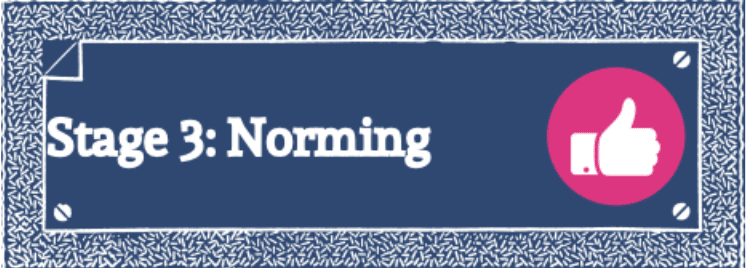
The norming stage of team development is like a months-old couple that accepts each other’s quirks and flaws. Compromises flourish during this stage. Team members adjust to teammate behaviors and devise strategies to overcome differences. Moving beyond initial hurdles, teammates acknowledge the common goal and focus on making significant progress.
Team building activities for the norming stage of team development: Varying knowledge, perspective, and skill sets lead a team to victory, and perhaps no activity drives that fact home more than trivia. Employees will realize that differences strengthen teams while answering trivia questions.
4. Performing
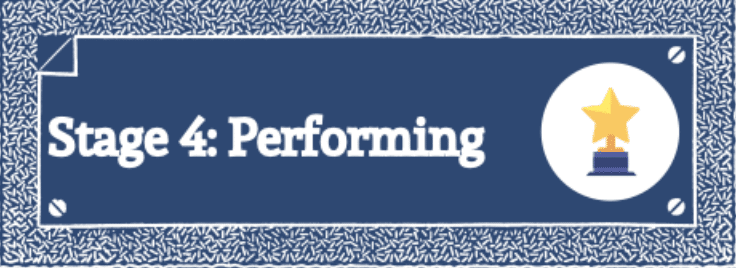
The performing stage of team development is where group members really start to hit a stride. This is where teammates truly commit: the marriage stage, so to speak. Teammates are adept at making decisions and following through with appropriate actions. At this point, leaders may find that the group needs minimal supervision and support from management. Through cooperation, teammates are able to make noticeable headway and achieve great results.
Team building activities for the performing stage of team development: Now that you and your team have mastered the ins-and-outs of working together, you can put your teamwork to the test with a mystery-solving challenge like virtual murder mysteries. Since your team is now a synchronized and well-oiled machine, you should have no trouble cracking clues and unraveling riddles.
5. Adjourning/mourning

The adjourning or mourning stage of team development is where the group parts ways. An amicable breakup, so to speak. The project has reached its natural end, and group members acknowledge that while the group has found success, it is time for the team to split and move on to new challenges. The mourning stage paves the way for more growth and learning and new opportunities. This final part of the team building process grants teammates closure and provides a chance to reflect on the experience.
Team building activities for the mourning stage of team development: What better way to celebrate a job well done than with a well-deserved drink? You and your team can host a virtual happy hour. This online activity is a great way to spend time together and toast each other’s hard work.
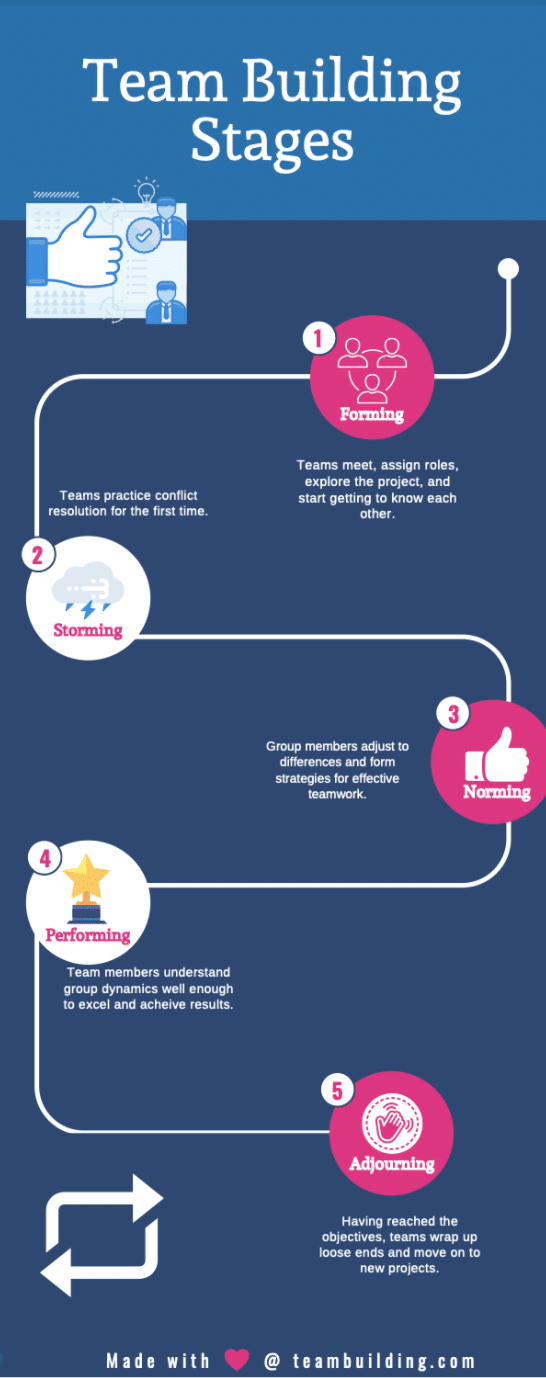
Why do some sources call team building a four stage process?
Originally, Bruce Tuckman conceived team development as a four stage process: forming, storming, norming, and performing. A decade after publishing the initial findings, Tuckman amended the process to include the final stage of adjourning or mourning.
What is the most important stage of team development?
While all phases of team building are important, many leaders consider storming to be the most important stage of team development. During the storming stage, team members encounter initial obstacles and master conflict resolution. This is one of the most crucial points for building trust and forming resilient relationships.
Why is the group development process important?
The group development process is important because the system allows leaders to identify the correct stage of development and accurately assess the level of teamwork. The leader can then concoct an improvement plan to move team members through the development phases.
Do the five stages of team building always occur in the same order?
The five stages of team building do not always occur in the same order. While team development typically progresses linearly from forming to adjourning, occasionally teams may need to revisit certain steps of the progress. For instance, if the team switches leaders or multiple teammates midway through a project, then the team may revert back to
Final thoughts
Understanding the team building stages helps a leader guide groups through the team development process. Though each individual group’s journey is unique, knowing that teams typically progress through a series of forming, storming, norming, performing, and adjourning/mourning allows leaders to consciously shape the team building process.
For more advice, check out these lists of team building books and team building tips.
